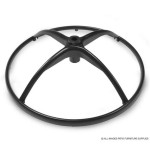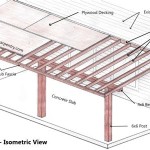How to Extend a Concrete Patio With Pavers
Extending an existing concrete patio with pavers is a viable option for homeowners seeking to increase their outdoor living space without undertaking a complete patio replacement. This approach offers a blend of aesthetic appeal, durability, and potential cost-effectiveness. The process requires careful planning, site preparation, and proper installation techniques to ensure a seamless and long-lasting integration between the old and new surfaces.
Before initiating the project, it is crucial to assess the existing concrete patio's condition. Any significant cracks, crumbling, or uneven settling should be addressed before proceeding. Minor imperfections may be acceptable, but a structurally unsound base will compromise the stability of the paver extension. Furthermore, homeowners should consider local building codes and regulations regarding patio expansions, which may necessitate permits or adherence to specific construction standards.
The selection of pavers is a critical decision. The type, color, size, and pattern of the pavers should complement the existing concrete patio and the overall aesthetic of the property. Consider factors such as durability, maintenance requirements, and cost when making a selection. Concrete pavers, brick pavers, and natural stone pavers are common choices, each offering distinct advantages and disadvantages.
Planning and Preparation are Key
Effective planning is paramount to a successful paver patio extension. This stage involves creating a detailed design that accurately reflects the desired layout, dimensions, and paver pattern. Accurately measuring the existing patio and the intended extension area is essential for calculating the required materials and ensuring a precise fit. The design should also account for drainage, ensuring that water flows away from the house and does not accumulate on the patio surface. It is beneficial to create a scaled drawing of the patio extension, marking the location of each paver and any necessary cuts. This visual aid will simplify the installation process and minimize errors.
Site excavation is a necessary step in preparing the ground for the paver base. The existing soil must be removed to a depth sufficient to accommodate the base material, bedding layer, and the pavers themselves. The exact depth will vary depending on the chosen materials and desired finished height. Typically, a minimum of 6-8 inches of excavation is recommended. It's important to maintain a consistent grade throughout the excavated area to ensure a level surface for the paver base.
Compacting the excavated area is crucial for creating a stable foundation. A plate compactor should be used to firmly compress the soil, creating a dense and uniform surface. This step is essential for preventing settling and ensuring the long-term stability of the paver patio. The compaction process should be repeated in multiple passes, ensuring that the entire area is thoroughly compacted.
Installing edging restraints is necessary to prevent the pavers from shifting and spreading over time. Edging restraints can be made from plastic, metal, or concrete. They should be installed around the perimeter of the paver extension, securely anchoring them to the ground with stakes or spikes. The edging restraints should be positioned flush with the finished paver surface, providing a clean and professional appearance.
Building the Paver Base
The base layer is the foundation upon which the pavers will rest. The choice of base material is important for ensuring proper drainage and structural stability. Crushed stone, such as gravel or limestone, is a commonly used base material. The base material should be spread evenly over the compacted soil, creating a uniform layer. The thickness of the base layer will depend on the soil conditions and the expected load on the patio, but a minimum of 4 inches is generally recommended.
Compacting the base layer is as crucial as compacting the soil. Using a plate compactor, thoroughly compact the crushed stone base, ensuring that it is dense and level. This process will create a stable and uniform surface for the bedding layer. Multiple passes with the plate compactor may be required to achieve optimal compaction.
The bedding layer, typically comprised of sand or fine gravel, provides a level surface for setting the pavers. The bedding layer should be spread evenly over the compacted base material, creating a layer approximately 1 inch thick. It is essential to use a screed board to level the bedding layer, ensuring a consistent and smooth surface. Any inconsistencies or imperfections in the bedding layer can result in uneven pavers and a less-than-desirable final result.
Installing the Pavers
The actual installation of the pavers requires precision and attention to detail. Begin by placing the pavers along the edge of the existing concrete patio, ensuring a tight and seamless transition. Use a rubber mallet to gently tap each paver into place, ensuring that it is level and aligned with the adjacent pavers. Maintain consistent spacing between the pavers to allow for joint sand.
When cutting pavers to fit along the edges or around obstacles, use a paver splitter or a wet saw with a diamond blade. Safety glasses and hearing protection should be worn when using these tools. Make precise cuts to ensure a clean and professional finish. Any chipped or damaged pavers should be discarded or used in less visible areas.
As the pavers are installed, continuously check for level and alignment. Use a level to ensure that the pavers are flush with each other and with the existing concrete patio. Make adjustments as needed by adding or removing sand from the bedding layer. The goal is to create a smooth and even surface that is free of tripping hazards.
After all the pavers have been installed, sweep joint sand into the spaces between the pavers. Joint sand helps to stabilize the pavers and prevent weed growth. Use a broom to distribute the sand evenly, filling all the joints completely. Once the joints are filled, use a plate compactor with a rubber pad to compact the pavers and settle the sand. This process may need to be repeated several times to ensure that the joints are fully packed.
Finally, sweep away any excess joint sand from the patio surface. Apply a sealant to the pavers to protect them from staining and weathering. The sealant will also enhance the color of the pavers and make them easier to clean. Follow the manufacturer's instructions when applying the sealant, ensuring even coverage and proper drying time.
Maintaining the extended patio involves regular sweeping to remove debris, occasional washing with a mild detergent, and periodic re-application of joint sand as needed. Addressing any minor issues promptly will help to prevent them from escalating into more significant problems.

Xenia Paver Patio Extension

Pin Page

Revealing A Creative Diy Patio Extension With Pavers

How To Install Pavers Over A Concrete Patio Family Handyman

Pool Deck Screen Enclosures Oviedo Screened Decks Windermere

How To Extend Your Home S Patio With Pavers

Pin Page

How To Extend A Patio With Pavers Aviara

Diy Concrete Patio In 8 Easy Steps How To Pour A Cement Slab

Extending Existing Patio Ideas Redflagdeals Com Forums








